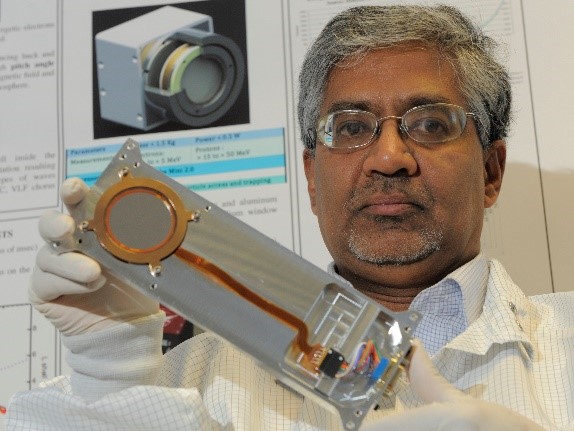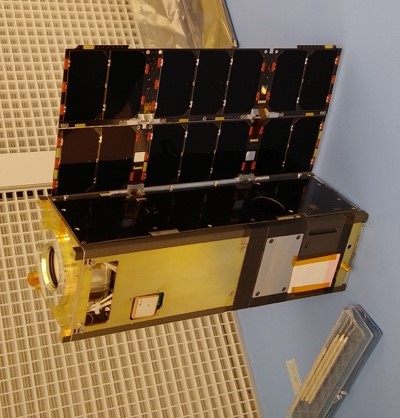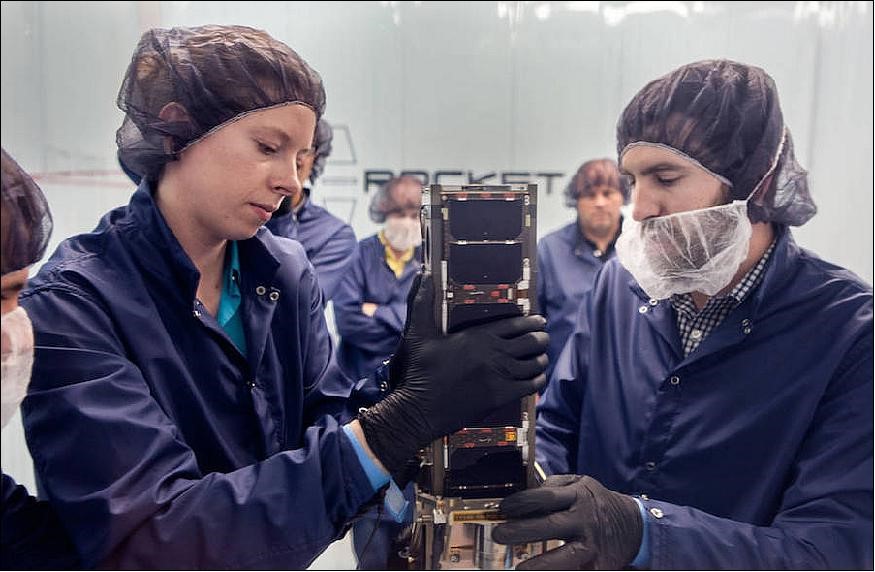
Compact Radiation bElt Explorer (CeREs) is a 3U GSFC CubeSat led by Principal Investigator Dr. Shri Kanekal. The mission is funded by the NASA Science Mission Directorate Heliophysics Division. It is being done in collaboration with Southwest Research Institute (SwRI). The primary objective of CeREs is to study charged particle dynamics in the Earth’s radiation belts and gain further understanding of the acceleration and loss of radiation belt electrons. CeREs aims to significantly augment key science goals of NASA's Radiation Belt Storm Probes Mission (RBSP). One of the prime objectives of this mission is to determine the dominant mechanisms for relativistic electron loss. A key process by which electrons are lost from the radiation belts are microbursts, extremely short duration (hundreds of milliseconds) of precipitating electrons. While these are believed to be caused by plasma waves in the near equatorial plane, the microbursts themselves are best characterized from an instrument on a high inclination LEO spacecraft, which is the role CeREs intends to fill. The primary instrument for CeREs is the Miniaturized Electron and pRoton Telescope (MERiT). It is designed to measure suprathermal to relativistic electrons from 5 keV up to 10 MeV and energetic protons between 100 keV-100 MeV.

The MERiT instrument was developed and tested at GSFC with sensor calibration support from SwRI. The spacecraft bus was also constructed at GSFC. It was comprised of several COTS components from vendors such as Blue Canyon Technologies (attitude control system, EPS, batteries, processor), Clyde Space (solar arrays), and L3 Communications (radio). For on-board science processing, the Center for High-Performance Reconfigurable Computing (CHREC) Space Processor, or CSP, was integrated into the spacecraft. Spacecraft performance verification and environmental testing was conducted at GSFC in preparation for the NASA CubeSat Launch Initiative (CSLI) program launch opportunity on Rocket Lab's Electron.
The spacecraft was launched to a circular 85° high-inclination orbit at an altitude of 500 km on December 16th, 2018. Initial contact was made within the first week by the NASA Wallops Flight Facility UHF ground station. The spacecraft telemetry showed that the system functions were nominal. However, after December 21, 2018, no further contact with CeREs has been made. The ground station continued passive listening searches for several months, but these attempts were unsuccessful. Despite not be able to meet mission's science goals, CeREs proved to be an excellent learning experience for the GSFC team and this has carried forth into the current in-house developments.



